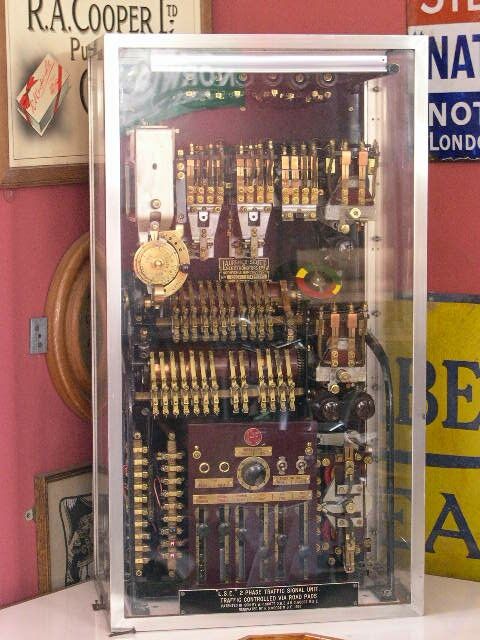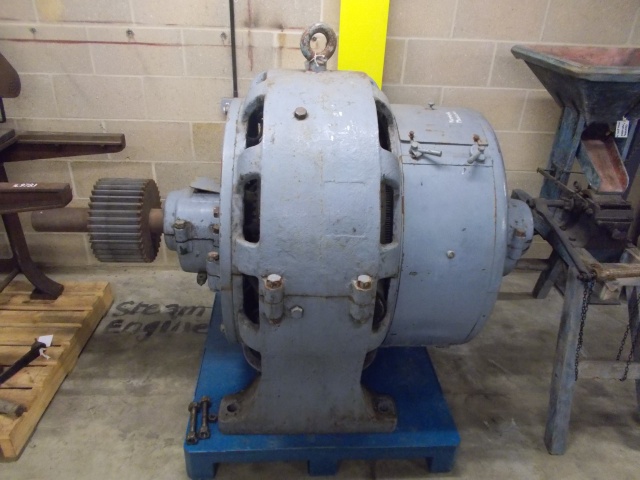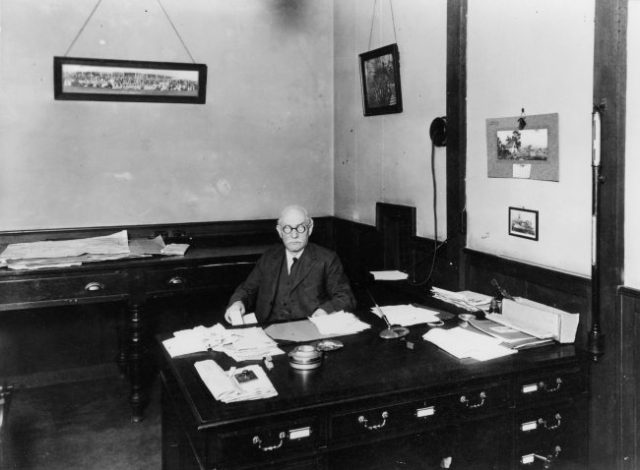This week we have a guest blog from Collections Development Assistant Wayne Kett who shines a light on Norwich manufacturers Laurence and Scott and a HUGE motor that we recently moved into the Norfolk Collections Centre
By Wayne Kett
100 years ago going to work in Norwich for the vast majority of people meant making something. Perhaps you worked in Colman’s mustard factory or brewed beer in one of the big breweries, perhaps you made shoes, wove silk or worked in the printing or engineering industries. Now in the 21st century the percentage of Norwich workers employed in manufacturing is just 8%.
Images of Norwich in the 19th century and the first half of the 20th century contain a feature of the landscape long since extinguished from the skyline….. chimneys, evidence of the cities industrial past.
The subject of this blog is one of the companies that still manufacture in Norwich. This is the story of Laurence & Scott.
Why Laurence and Scott? Well a few weeks ago we were tasked with moving a large motor originally manufactured by Laurence and Scott and now part of our accessible collections stored here at Norfolk Collections Centre.
It is incredibly heavy, thankfully moving it was eased after we managed to hoist it onto one of our re-enforced plastic pallets. Then with the aid of a pallet truck and some elbow grease we were able to manoeuvre it into place.
After all that effort I decided to find out why we have chosen to keep such a large and cumbersome object. To answer this I had to consider, why Laurence and Scott are so important to the story of industrial Norwich?
This story sparks into life in 1883 with another of Norwich’s great industrial innovators, Jeremiah Colman. Impressed with the new technical innovation of electricity, Colman decided he wanted lighting at his mustard factory. To complete the work he commissioned the Hammond Electric Light and Power Supply Company of Nottingham.
One of the engineers the company sent was William Harding Scott, he was obviously quite taken with our fine city as he decided to stay after the work was complete. With the help of Colman he set up his own business.
Scott had the brains, but he lacked capital, this is where Reginald Laurence joins the story. Educated at Harrow and the son of a stock broker he was saw the potential of Scott’s business and invested £6,000. From this point on they became known as Laurence and Scott.
Initially the company focused on electrical supply laying distribution mains and providing power. Their generating station set up in 1889 provided the city with its first electrical lighting and was situated in Stamp Office Yard next to St Andrews Street and provided electricity via overhead cables. The city council paid for lighting for the library, the local asylum and St Andrews Hall.
The company soon moved away from electrical distribution and decided to concentrate on building the electrical motors for which they would become famous. These were manufactured at the Gothic Works on Hardy Road which was opened in 1896 and is still in operation today.
When the Gothic works opened it had 7,500 square meters of work space and by 1937 there were over 3,000 employees. The company helped Norwich develop a highly skilled workforce by offering apprenticeships to school leavers, by the late 40’s they were offering 20-30 five year apprenticeships to school leavers every year.
Scott died in 1938 just one month after the death of his youngest son. Since then there have been numerous mergers and takeovers, but Laurence and Scott are still manufacturing electric motors in Norwich operating as ATB Laurence and Scott.
Laurence and Scott were responsible for many innovations and made significant contributions including:
- Development of electrical motors that could be used in extreme conditions.
- Scott developed…..accumulator switches, automatic cut-outs, starting switches and a patent automatic fuse.
- It was a Laurence and Scott motor that drove the tunnelling machine that dug out the UK side of the channel tunnel.
- Not only did they supply the navy with electrical motors during World War One, but they also converted part of their operation to manufacture shells. By the cessation of hostilities it was estimated Laurence and Scott had produced £1 million worth of shells for the war effort, producing approx 250 shells a day.
- During World War Two they developed switchgear for submarines, controllers for tank landing craft and continued to supply the Navy with electric motors.
- After the war Laurence and Scott begun supplying power plants up and down the country. They continued to supply the Navy, including the supply of electric propulsion motors for the Trident submarines that carry our nuclear arsenal.
- Scott ever the innovator invented a two-phase traffic signal unit which was then manufactured by Laurence and Scott. This was an example of one of the very first traffic light systems ever used.

This traffic signal unit manufactured by Laurence and Scott forms part of the Museum of Norwich’s collection. It was first installed at the Unthank Road and Colman Road junction.

An advert for the Laurence and Scott traffic control equipment, among its boasts are that it does not interfere with wireless reception.
To find out more about Laurence and Scott and the rest of Norwich’s industrial story why not visit the Museum of Norwich.







Reblogged this on Old School Garden.
LikeLike
Laurence and Scott also supplied the main and auxiliary generators for the very first mainline dlesel-electric locomotive to run on Britain’s railways. Numbered D9, commissioned by the LNER and built by Armstrong-Whitworth. Sadly the locomotive led a very short life of just four years from July 1933 to 1937. Her working life was even shorter, with a severe crankcase explosion in the engine (an Armstrong-Sulzer 8LD28) effectively ending her career in June 1934.
LikeLike
Atb Laurence Scott are now owned by the second biggest manufacturer of electric motors in the world Woo Long of China. I have worked at Scott’s for 45 years. There are now around 130 workers on site and we turned over about £18 million in 2017. As well as trident sub’s we also supplied main generators for astute class nuc sub’s. One of our type 24 torpedo motors powered the torpedo that sunk the Argentina battleship Balgrano in the Falklands conflict. We are still working on secret contracts for the MOD and our motors are running continuously in all our AGR and PWR nuclear power stations.Flameproof machines are still made for use in goal mines and our induction machines are powering pumps pumping oil, air, water and sewerage all over the world both on and offshore.
LikeLike
My mother was Reben Clarke’s younger sister. As a schoolboy in the Fifties I was given a tour of the Gothic works by my Uncle Reuben (Pete) Clarke, who was marine sales director at the time. My Grandfather was gardener for Mr Scott at Old Catton and was invited by him to send his two sons Walter and Reuben to be apprentices at Laurence and Scotts. They both went on to be in charge of the test bed, then Walter left to buy a fruit farm at Saxlingham Thorpe and Uncle Pete progressed to being a director, eventually being honoured with an OBE..
If anyone has any information concerning Uncle Pete I will be very pleased to receive it! I do not have much information apart from a newspaper cutting from the EDP on his retirement. My email address is manorfarmdenton@gmail.com. John Fearnley
LikeLike